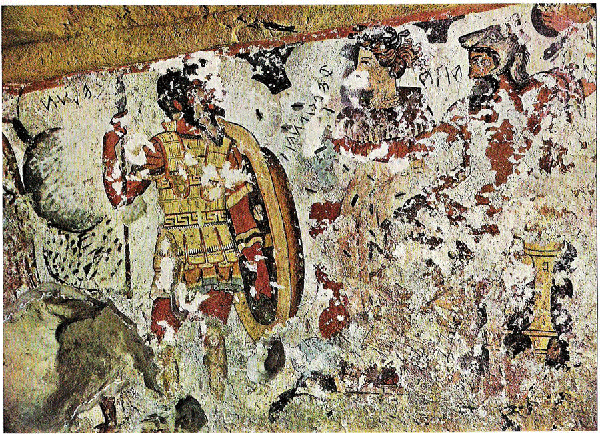- Alpan
The Etruscan goddess of love and the underworld. She is associated with the Lasas and is portrayed naked except for sandals and occasionally a loose open robe. She is also said to be a goddess of sexual love.

- Lasas

- Aita
The Etruscan god of the underworld. He is compared with the Greek Hades and the Roman god Pluto.

- Fufluns
An Etruscan god of vegetation, vitality and gaiety, son of the earth-goddess Semia. He is very similar to Dionysus and Bacchus, the Greek and Roman gods of wine.

- Charuns
- Tinia
- Uni

- Menrva
A closer look at Tinia
As the supreme Etruscan god, and ruler of the skies, I felt that Tinia's impact deserved a closer look. He is compared with the Greek Zeus and Roman Jupiter well within the Etruscan window of prominence in the ancient world. The Etruscan kings built the first temple to Jupiter in Rome. It is obvious in modern day that the influences of many Etruscan, Greek and Roman names are still used today. Such as certain names of planets, names of months and days of the week. Tinia was often called “father” in inscriptions, and he has most of the characteristics of Jupiter. The name means “day” in Etruscan. He is the god of boundaries and justice.That being said, his Roman counterpart Jupiter had a lot of influence on Roman government and the idea of justice. This attitude towards government is still seen today in many countries, including our own, the USA. He is shown as a bearded male, at the center of the scene, grasping a group of thunderbolts. In Latin literature, the bolts are three types: for warning, good or bad interventions, and drastic catastrophes. Unlike Zeus, Tinia needs permission from the Dii Consentes (consultant gods) and Dii Involuti (hidden gods) to fulfill the last two thunderbolts. In a more modern Tuscan folklore he became an evil spirit, Tigna, who causes lightening strikes, hail, rain, whirlwinds and mildew.
References:
https://en.wikipedia.org/wiki/Jupiter_(mythology)
http://www.chianti.info/etruscan_mythology.htm#.VaYUGPlViko
http://www.ancient.eu/Roman_Religion/
Merriam-Webster's Encyclopedia of World Religions
By Wendy Doniger, Merriam-Webster, Inc
Nancy DeGrummond & Erika Simon, The Religion of the Etruscans, 2006
my father is certanly a major creater
ReplyDelete